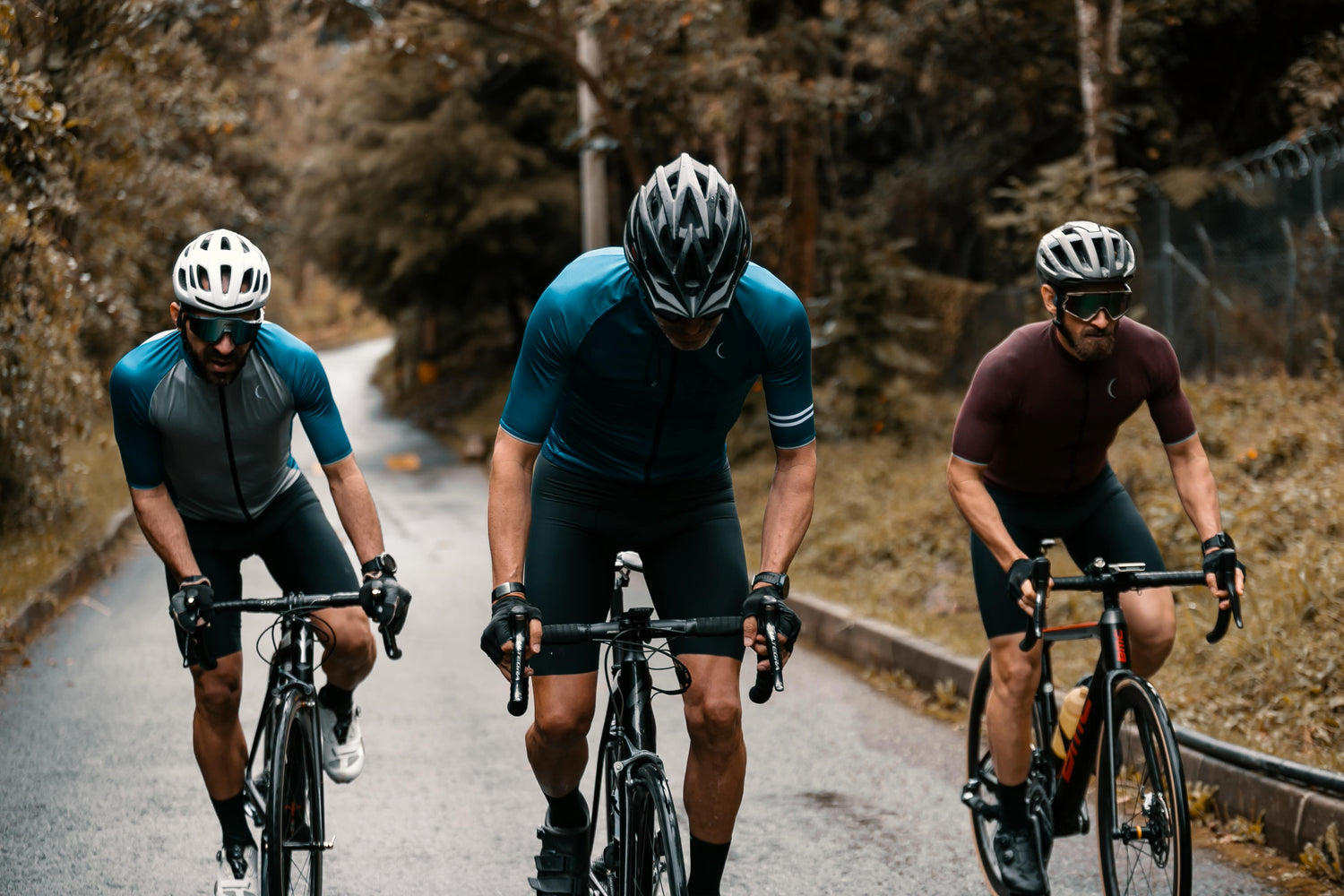What accessories do you need for a road bike?

Have you just bought a £10,000 speed machine? Or perhaps you’ve got a vintage steel frame road bike that you’ve spotted second-hand for £200? Whatever bike you have, there are certain accessories you can add that will make your life much easier. So, here’s our guide to a few accessories you’ll need, and a few more that you’ll probably just want…
Lights
Forget about speed, safety is undoubtedly the most important thing to consider when you are out on the road. Whether you are commuting to work or trying to squeeze in a road ride before dusk, lights are the one thing you should never leave home without.
When it comes to lights, you’ll need a white one on the front and red on the back — it is actually illegal to ride on the roads at night without these.
They come in all shapes and sizes, and range from a small flicker to something that wouldn’t look out of place on the front of a ship. The best lights for you will be different to someone else, although on the roads the brightest you would probably ever need is between 600-800 lumens — and that would only really be for use on unlit country lanes.
Most high-quality bike lights are now USB-chargeable, so you shouldn’t need to worry about buying batteries either.
Mudguards
In the summer, you probably won’t need to think about mudguards (sometimes known as fenders). However, in the winter it's a very different story.
Mudguards prevent the dreaded wet bum and back that is caused by your wheel flicking up water from the road. It’s not a very pleasant experience and definitely something you want to avoid if you are out on long rides. In fact, most cycling clubs will actually require you to use mudguards in the winter, as they prevent you from flicking up water and grit into the face of the rider behind you when riding in a group.
There are lots of extremely lightweight options on the market and many of them are easy to clip on and off, meaning you can adapt to the weather forecast. And let’s be honest, we all know how important that is here in the UK…
Cycling Computer
Cycling can be a data-heavy sport. From average speed to watts to elevation, there are countless stats that you’ll want to be able to see when out on the roads — especially as you become more experienced.
The best way to monitor and track this is through a cycling computer, which is a small digital device that you mount on your handlebars. The simplest computers provide a basic amount of information, however premium devices can act as navigation systems and will provide as many numbers and measurements as you can dare to dream of. Garmin and Wahoo are perhaps two of the biggest names out there, but there are a number of smaller brands that make excellent cycling computers too.
If you aren’t cycling all the time you might not want to spend money on a cycling-specific fitness tracker, so there are cheaper and easier alternatives. Garmin or apple watches will often do the trick if you already have one of these, although they aren’t as easy to glance at during rides. If you are just starting out then you can also use your phone alongside tracking apps like Strava and navigation apps like Komoot. If you are doing this, be sure to invest in a good handlebar mount for your phone.

Bottle Cages
Cycling is thirsty work, and there is nothing worse than being stuck out in the hills without any water or shops in sight. Nearly all modern road bikes have mounts to attach bottle cages, and if you are planning on going on long, remote rides, it's almost certainly worth fitting two.
Saddle Bags
Saddle bags are a small but vital part of a cyclist’s kit. These tiny bags attached underneath the rear of the saddle (as the name suggests), are where cyclists keep their tools and repair kits. If you are running inner tubes on your bike, then at minimum you will need an allen key, a spare inner tube and tyre levers, in case you get a flat. Many cyclists put a small pump or canister in the back of their jersey to inflate their tyres, but some saddle bags will fit these in too.
Cyclists are generally obsessed with their gear, so this accessories list could easily go on and on and on. However, in our opinion these are the essentials to bear in mind when heading out on to the road.
Happy riding!






